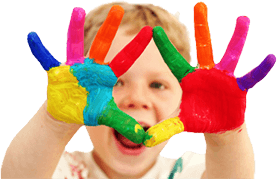Anxiety Disorders exist when:
- is a fear or worry about a certain event or multiple areas of life
- The fear or worry is excessive compared to that experienced by peers or is age-inappropriate
- The fear or worry lead to avoidance of activities, events or social outings
- The fear or worry causes significant distress or interference in one's daily life or activities
Anxiety Disorder can take many different forms:
- Generalised Anxiety Disorder (GAD) where there is excessive worry
- Separation Anxiety Disorder (SAD)
- Social Phobia (SP) where there is a negative evaluation from others
- Specific Phobia (SpP) very common, for example fear of heights, fear of dogs
- Obsessive Compulsive Disorder (OCD)
- Panic Disorder with/out Agoraphobia (PD) fear of further panic attacks
- Post-Traumatic Stress Disorder (PTSD)
Common Signs & Symptoms of Anxiety in your child or adolescent:
- Mistakes, routine changes and new situations cause distress
- Physical symptoms such as headaches or stomach-aches
- Constant reassurance seeking
- Perfectionistic traits
- Poor sleep habits, insomnia
- Argumentative or unusual/out of character oppositional behaviour
- Friendship difficulties
- Negative expectations of self and others
- Sudden unexpected panic
- Changes in appetite
It is important to be able to distinguish symptoms caused by worry, where the worry or anxiety is the primary source of the symptom in your child or adolescent, for example it is not ADHD if the distraction or inattention is caused by worry; it is not ODD if the child refuses to participate or do something because they fear the situation; having poor social skills does not necessarily indicate social phobia; habit disorders such as hair pulling and nail biting are not necessarily anxiety.
Assessing normal vs clinical anxiety in children and adolescents can be difficult at times. It is important to realise that fears change from birth to adulthood. Normal fears generally differ from clinical anxiety in severity not quality.
Some common questions parents and/or professionals can ask:
- Is the anxiety or worry causing marked distress and/or interference in major areas of functioning, eg social life, friendships with my child or adolescent?
- Is the behaviour and distress/worry excessive compared to other children of the same age?
Treatment of Anxiety
1. Exposure to the event or situation or fear
2. Detective thinking
3. Mindfulness
4. Cognitive Restructuring
5. Relaxation
6. Increase Communication with your child
7. Avoid being over protective and reassuring
8. Demonstrate that we don't have to be perfect and that making mistakes is ok
9. Model non anxious behaviour
Changes to the new DSM-V for Anxiety Disorders
The Diagnostic and Statistical Manual of Mental Disorders, 5th Edition (DSM-V) (ie classification of mental disorders) chapter on anxiety disorders no longer includes obsessive compulsive disorder (OCD) or Post Traumatic Stress Disorder (PTSD). Instead these disorders have been relocated to their own respective chapters.
Andrew uses Cognitive Behaviour Therapy, Acceptance & Commitment Therapy and Mindfulness techniques when working with children and adolescents on anxiety.






